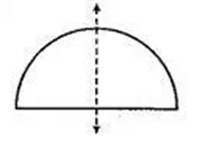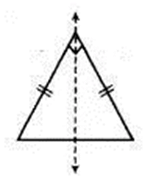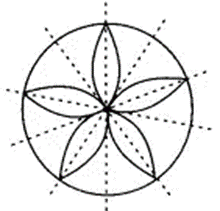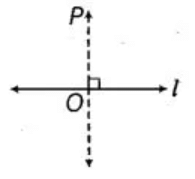NCERT Exemplar Solutions: Practical Geometry - Class 6 PDF Download
Exercise Page: 136
Q.1. In the following figures, the figure that is not symmetric with respect to any line is:
(i)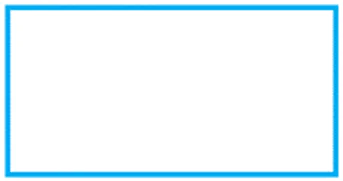
(ii) 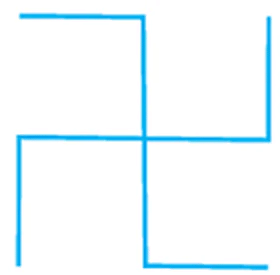
(iii)
(iv) 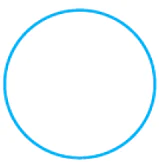
(a) (i)
(b) (ii)
(c) (iii)
(d) (iv)
Correct Answer is Option (b)
A figure is said to have line symmetry if by folding the figure along a line, the left and right parts of it coincide exactly. The line is called the line (or axis) of symmetry of the figure.
Q.2. The number of lines of symmetry in a scalene triangle is
(a) 0
(b) 1
(c) 2
(d) 3
Correct Answer is Option (a)
A scalene triangle is a triangle that has three unequal sides. Therefore, there is no lines of symmetry in a scalene triangle.
Q.3. The number of lines of symmetry in a circle is
(a) 0
(b) 2
(c) 4
(d) More than 4
Correct Answer is Option (d)
Q.4. Which of the following letters does not have the vertical line of symmetry?
(a) M
(b) H
(c) E
(d) V
Correct Answer is Option (c)
Q.5. Which of the following letters have both horizontal and vertical lines of symmetry?
(a) X
(b) E
(c) M
(d) K
Correct Answer is Option (a)
Q.6. Which of the following letters does not have any line of symmetry?
(a) M
(b) S
(c) K
(d) H
Correct Answer is Option (b)
Q.7. Which of the following letters has only one line of symmetry?
(a) H
(b) X
(c) Z
(d) T
Correct Answer is Option (d)
Q.8. The instrument to measure an angle is a
(a) Ruler
(b) Protractor
(c) Divider
(d) Compasses
Correct Answer is Option (b)
An instrument for measuring angles, typically in the form of a flat semicircle marked with degrees along the curved edge.
Q.9. The instrument to draw a circle is
(a) Ruler
(b) Protractor
(c) Divider
(d) Compasses
Correct Answer is Option (d)
The instrument to draw a circle is compasses.
Q.10. The number of set squares in the geometry box is
(a) 0
(b) 1
(c) 2
(d) 3
Correct Answer is Option (c)
Q.11. The number of lines of symmetry in a ruler is
(a) 0
(b) 1
(c) 2
(d) 4
Correct Answer is Option (c)
We know that the ruler has the shape of a rectangle, So, the number of lines of symmetry in a ruler is 2.
Q.12. The number of lines of symmetry in a divider is
(a) 0
(b) 1
(c) 2
(d) 3
Correct Answer is Option (b)
The number of lines of symmetry in a divider is 1.
Q.13. The number of lines of symmetry in compasses is
(a) 0
(b) 1
(c) 2
(d) 3
Correct Answer is Option (a)
Therefore, there are no lines of symmetry in a compasses.
Q.14. The number of lines of symmetry in a protractor is
(a) 0
(b) 1
(c) 2
(d) More than 2
Correct Answer is Option (b)
Therefore, there is only one line of symmetry in a protractor.
Q.15. The number of lines of symmetry in a 45o – 45o – 90o set-square is
(a) 0
(b) 1
(c) 2
(d) 3
Correct Answer is Option (b)
From the question, it is given that, measurement of an isosceles triangle. So, the number of lines of symmetry in a given set-square is 1.
Q.16. The number of lines of symmetry in a 30o – 60o – 90o set square is
(a) 0
(b) 1
(c) 2
(d) 3
Correct Answer is Option (a)
From the question, it is given that, measurement of a scalene triangle. So, the number of lines of symmetry in a given set-square is 0.
Q.17. The instrument in the geometry box having the shape of a triangle is called a
(a) Protractor
(b) Compasses
(c) Divider
(d) Set-square
Correct Answer is Option (d)
In Questions 18 To 42, Fill in The Blanks to Make the Statements True.
Q.18. The distance of the image of a point (or an object) from the line of symmetry (mirror) is ________ as that of the point (object) from the line (mirror).
The distance of the image of a point (or an object) from the line of symmetry (mirror) is the same as that of the point (object) from the line (mirror).
Q.19. The number of lines of symmetry in a picture of the Taj Mahal is _______.
The number of lines of symmetry in a picture of the Taj Mahal is one.
Q.20. The number of lines of symmetry in a rectangle and a rhombus are ______ (equal/unequal).
The number of lines of symmetry in a rectangle and a rhombus are equal.
Q.21. The number of lines of symmetry in a rectangle and a square are______ (equal/unequal).
The number of lines of symmetry in a rectangle and a square are unequal.
Q.22. If a line segment of length 5cm is reflected in a line of symmetry (mirror), then its reflection (image) is a ______ of length _______.
If a line segment of length 5cm is reflected in a line of symmetry (mirror), then its reflection (image) is a line segment of length 5cm.
Q.23. If an angle of measure 80o is reflected in a line of symmetry, then the reflection is an ______ of measure _______.
If an angle of measure 80o is reflected in a line of symmetry, then the reflection is an angle of measure 80o.
Q.24. The image of a point lying on a line l with respect to the line of symmetry l lies on _______.
The image of a point lying on a line l with respect to the line of symmetry l lies on line l.
Q.25. In Fig, if B is the image of point A with respect to line l and P is any point lying on l, then the lengths of line segments PA and PB are _______.
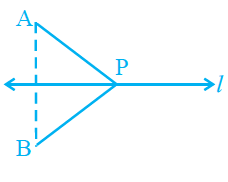
In Fig, if B is the image of point A with respect to line l and P is any point lying on l, then the lengths of line segments PA and PB are equal.
Q.26. The number of lines of symmetry in Fig. is__________.
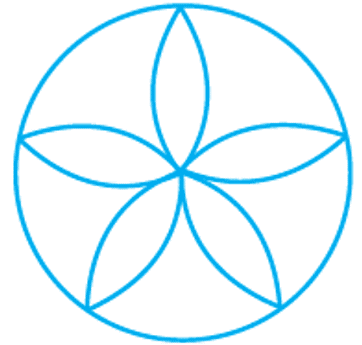
The number of lines of symmetry in Fig. is 5.
Q.27. The common properties in the two set-squares of a geometry box are that they have a __________ angle and they are of the shape of a __________.
The common properties in the two set-squares of a geometry box are that they have a right angle and they are of the shape of a triangle.
Q.28. The digits having only two lines of symmetry are_________ and __________.
The digits having only two lines of symmetry are 0 and 8.
Q.29. The digit having only one line of symmetry is __________.
The digit having only one line of symmetry is 3.
Q.30. The number of digits having no line of symmetry is_________.
The number of digits having no line of symmetry is 7.
The digits having no line of symmetry are 1, 2, 4, 5, 6, 7 and 9
Q.31. The number of capital letters of the English alphabets having only a vertical line of symmetry is ____.
7
The letters are A, M, T, U, V, W, and Y having only vertical lines of symmetry.
Q.32. The number of capital letters of the English alphabets having only a horizontal line of symmetry is ____.
5
The letters are B, C, D, E, and K having only horizontal line of symmetry.
33. The number of capital letters of the English alphabets having both horizontal and vertical lines of symmetry is ___.
4
The letters are H, I, O and X having both horizontal and vertical line of symmetry.
Q.34. The number of capital letters of the English alphabets having no line of symmetry is ___.
10
The letters are F, G, J, L, N, P, Q, R, S and Z having no line of symmetry.
Q.35. The line of symmetry of a line segment is the ____ bisector of the line segment.
Perpendicular
Q.36. The number of lines of symmetry in a regular hexagon is ____.
6
Q.37. The number of lines of symmetry in a regular polygon of n sides is ____.
n
Q.38. A protractor has ____ line/lines of symmetry.
1
Q.39. A 30° – 60° – 90° set-square has ___ line/lines of symmetry.
No
Q.40. A 45° – 45° – 90° set-square has ___ line/lines of symmetry.
One
Q.41. A rhombus is symmetrical about ____.
Diagonals
Q.42. A rectangle is symmetrical about the lines joining the ___ of the opposite sides.
Mid points
A rectangle has two lines of symmetry along the line segments joining the mid-points of the opposite sides.
In Questions 43 To 61, State Whether the Statements Are True or False.
Q.43. A right angled triangle can have at most one line of symmetry.
True
A right-angled triangle can have one line of symmetry, if it is an isosceles triangle.
Q.44. A kite has two lines of symmetry.
False
Because a kite has one line of symmetry, i.e.
Q.45. A parallelogram has no line of symmetry.
True
Parallelogram has no line of symmetry.
Q.46. If an isosceles triangle has more than one line of symmetry, then it need not be an equilateral triangle.
False
Since, if an isosceles triangle has more than one line of symmetry, then it must be an equilateral triangle.
Q.47. If a rectangle has more than two lines of symmetry, then it must be a square.
True
Because a square has four lines of symmetry.
Q.48. With ruler and compass, we can bisect any given line segment.
True
We can bisect any given line segment, using ruler and compass.
Q.49. Only one perpendicular bisector can be drawn to a given line segment.
True
A line segment has only one perpendicular bisector.
Q.50. Two perpendiculars can be drawn to a given line from a point not lying on it.
False
We can draw only one perpendicular from a point, not lying on the line.
Q.51. With a given centre and a given radius, only one circle can be drawn.
True
With a given radius and a centre, only one circle can be drawn.
Q.52. Using only the two set squares of the geometry box, an angle of 40° can be drawn.
False
An angle of 40° cannot be drawn by two set squares of the geometry box.
Q.53. Using only the two set squares of the geometry box, and angle of 15° can be drawn.
True
An angle of 15° can be drawn using only the two set squares.
Q.54. If an isosceles triangle has more than one line of symmetry, then it must be an equilateral triangle.
True
Because an equilateral triangle has three lines of symmetry.
Q.55. A square and a rectangle have the same number of lines of symmetry.
False
We know that, rectangle has two lines of symmetry but square has four lines of symmetry.
Q.56. A circle has only 16 lines of symmetry.
False
A circle has infinite number of lines of symmetry all along the diameters.
Q.57. A 45°- 45°- 90° set square and a protractor have the same number of lines of symmetry.
True
Both have one line of symmetry.
Q.58. It is possible to draw two bisectors of a given angle.
False
We can draw only one bisector of a given angle.
Q.59. A regular octagon has 10 lines of symmetry.
False
Since, a regular polygon has as many lines of symmetry as the number of its sides. Therefore, a regular octagon has 8 lines of symmetry.
Q.60. Infinitely many perpendiculars can be drawn to a given ray.
True
Since, a ray has infinite length, therefore infinitely many perpendiculars can be drawn to it.
FAQs on NCERT Exemplar Solutions: Practical Geometry - Class 6
| 1. What are the basic tools required for practical geometry? |  |
| 2. How can a compass be used in practical geometry? |  |
| 3. What is the purpose of a ruler in practical geometry? |  |
| 4. How is a protractor used in practical geometry? |  |
| 5. What are the different types of angles in practical geometry? |  |






